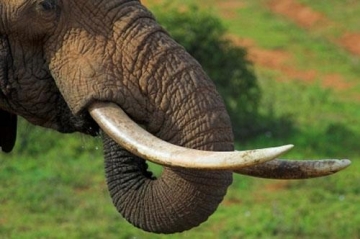Elephant Tusks
The tusks are the incredible feature of the elephants. An elephant’s tusks are basically modified incisor teeth that keep on growing throughout the elephant’s life. In Asian elephants, only male elephants have tusks. Some female Asian elephants have miniscule tusks that are known as tushes. On the other hand, in African elephants, both male and female elephants have tusks.
Size and Composition
About a third of the tusk is embedded in the elephant’s head. This hidden part is known as the pulp of the tusk, and it is composed of nerves, blood vessels, and tissues. The visible part is made from layers of dentine or ivory. Although tusks are present at birth, these baby tusks’ are replaced by permanent ones after one year. These tusks keep growing throughout their life. However, due to wear and tear and occasional breaks, their size remains in check.
The elephant tusks differ in size, weight, and length. Male tusks tend to be larger than the female tusks. Until now, the longest tusk recorded is 138 inches long and weighs 314 pounds, thus making it the heaviest tusk in the world.
Uses for Elephant Tusks
Elephant uses its tusks for various purposes. They use it for digging, foraging, fighting and ripping off bark. At times, they also act as a resting place for the elephant’s heavy head. They act as formidable weapons against predators like tigers. They are also used by elephants to move things out of their way.
The Downside of Elephant Tusks
The tusks of an elephant are both a blessing as well as a curse for an elephant. Elephant tusks add to their magnificence and majesty, but on the other hand, they are also dangerous for them. It is the tusks which lead to the senseless slaughter of elephants by ivory hunters. This priceless ivory is used in making several items of human enjoyment, including piano keys, billiard balls, and much more.

